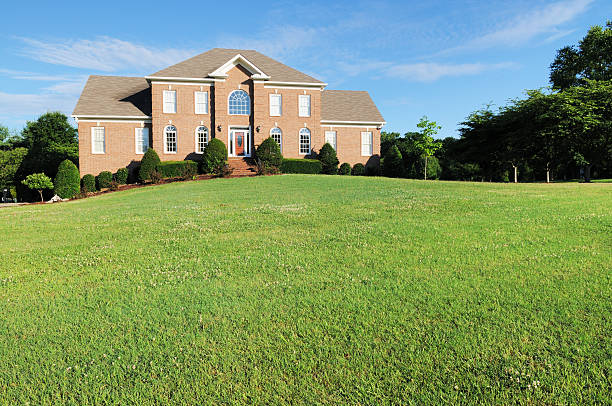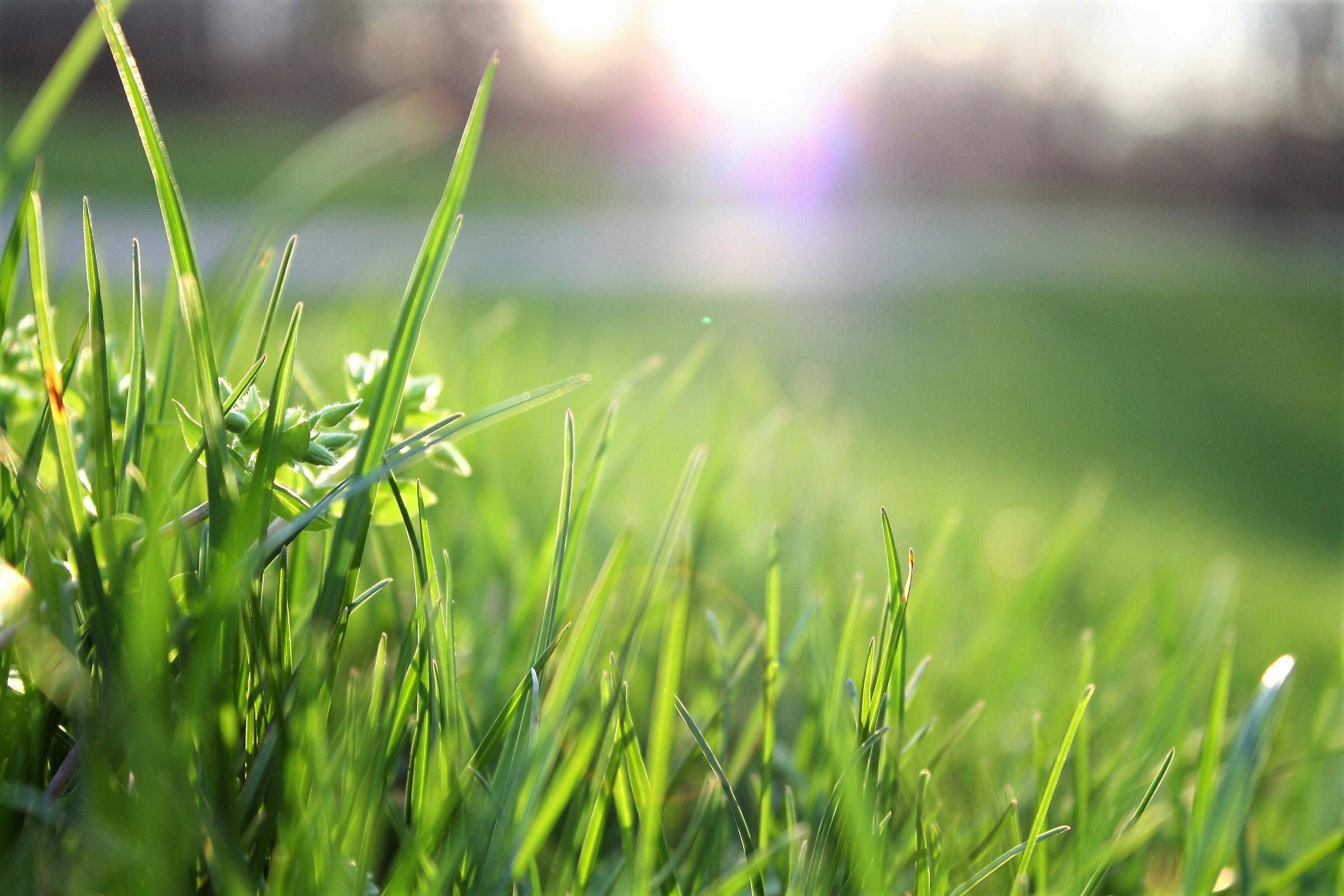A vibrant lawn is desired by many. Yet, achieving it can be a struggle for homeowners. Proper care is crucial for green grass. However, soil pH balance plays a monumental role. Just like our bodies, soil thrives in its optimal range. When pH is off, your lawn suffers. This occurs despite all your efforts. Lawn lime treatment offers a vital solution. It fixes acidic soil environments.
At Champion Green Turf, we understand this fully. A truly thriving lawn starts from the ground up. Addressing the soil’s foundation is paramount. This ensures long-term success. If your lawn struggles, soil acidity might be the hidden culprit.
Understanding Soil pH: The Foundation of Lawn Health
Before lime treatment, grasp soil pH. pH measures how acidic or alkaline soil is. It uses a scale from 0 to 14. A pH of 7.0 is neutral. Numbers below 7.0 mean acidity. Numbers above 7.0 mean alkalinity.
Most lawn grasses prefer a slightly acidic to neutral pH. This range is generally 6.0 to 7.0. Popular varieties include Kentucky Bluegrass, Fescue, and Ryegrass. Some Fescues tolerate more acidity. However, deviations impact nutrient absorption. Too acidic soil (below 6.0) locks up vital nutrients. Nitrogen, phosphorus, and potassium become unavailable. This is like a pantry full of food you can’t open. Nutrients are there, but grass cannot access them.
Signs Your Lawn Might Need Lime: What to Look For
How do you check soil pH without a test? A test is most accurate, of course. Still, visual clues show acidic soil. Your lawn might be struggling due to this.
First, observe grass color and density. Is your lawn dull, yellowish, or thin? Does this happen after consistent fertilization? This indicates nutrient deficiency. Locked-up nutrients cause this problem. Stunted growth also signals pH imbalance. A general lack of vigor can be a sign too.
Another sign is moss or many weeds. Moss thrives in acidic, poorly drained soil. This often means grass struggles. Many common weeds prefer acidic places. Dandelions, plantain, and sorrel are examples. They outcompete desirable grass in these conditions. If these invaders persist, pH is likely an issue.
Finally, consider your overall landscape. Are acid-loving plants thriving nearby? Azaleas or rhododendrons are examples. If your lawn struggles, soil is probably acidic. This provides a clear clue for gardeners.
The Power of Lime: Unlocking the Lawn Lime Treatment Benefits
Applying lime to your lawn is simple. It offers many lawn lime treatment benefits. Primarily, it raises soil pH. This makes the soil more alkaline. This adjustment changes the soil environment. A healthier lawn results from this.
One significant advantage is improved nutrient availability. As soil pH nears neutral, nutrients become soluble. Essential nutrients for grass include nitrogen, phosphorus, and potassium. They become more accessible to roots. This means fertilizer works better. Your grass will absorb it effectively. You might need less fertilizer over time. This leads to a healthier lawn and savings.
Moreover, balanced pH fosters a healthy microbial environment. Beneficial microorganisms break down organic matter. They also cycle nutrients. Low pH inhibits these microbes. This leads to slower decomposition. Less nutrient release occurs then. Correcting pH supports a thriving ecosystem. This enhances natural fertility and resilience.
Furthermore, lime treatment reduces moss and weeds. As soil becomes less acidic, conditions worsen for invaders. Grass can compete more effectively. It reclaims its territory. You will likely see fewer unwanted plants. This creates a cleaner, more uniform lawn.
Finally, a properly limed lawn becomes resilient. It withstands environmental stresses better. Drought, disease, and insects are examples. This happens because grass is stronger. It has robust root systems. Cellular structure also improves. This makes it less susceptible to damage. Lime treatment creates a stronger foundation. Your lawn will flourish with this help.
Testing Soil pH for Lawn: The Essential First Step
Before applying lime, test your soil pH. This is the single most important step. Guessing pH can cause over-liming. This is harmful, possibly worse than acidic soil. Too much lime makes soil too alkaline. This also locks up nutrients, creating new problems.
Soil testing kits are available. Find them at garden centers. Or, send a sample to your extension office. A private lab offers comprehensive analysis. These tests give accurate pH readings. They often recommend lime amounts. This is based on soil type and current pH.
Collect samples from several lawn areas. This gets an average reading. Avoid sampling near foundations or driveways. Also, avoid sampling near trees. These areas can skew results. Follow test kit instructions carefully. This ensures accuracy. This crucial step guarantees proper lime application. You maximize benefits without harm.
When to Apply Lime to Lawn: Timing is Everything
Knowing when to apply lime to lawn is crucial. Timing is almost as important as why. The ideal time is typically fall or early spring.
Fall application is often preferred. It allows lime time to break down. It also begins working over winter months. Rain and snow help dissolve the lime. It gradually seeps into the soil. This slowly adjusts the pH. By spring, your lawn will be ready. It will absorb nutrients for vigorous growth.
Early spring application is also acceptable. This is if you missed fall. Apply before grass actively grows. This gives it a head start. However, expect weeks for effects to show.
Avoid applying lime during hot, dry summer months. This can stress the lawn. Also, do not apply lime and fertilizer together. Separate applications by a few weeks. This ensures effective absorption. It prevents interference. Follow soil test recommendations for timing. Use appropriate application rates for best results.
Beyond Lime: The Champion Green Turf Approach to Lawn Health
Lawn lime treatment corrects pH. It is a powerful tool. However, it is just one component. It is part of a holistic lawn care strategy. Champion Green Turf believes in a comprehensive approach. We consider all lawn health aspects. This includes soil, watering, and maintenance.
We offer professional soil testing. We also provide precise lime applications. Our tailored fertilization programs help your lawn. They meet your lawn’s specific needs. Our expertise ensures correct application. We apply at the optimal time. This maximizes effectiveness. Every lawn is unique, and we respect that. Our customized solutions reflect this understanding.
Do not let soil pH prevent a lush lawn. You deserve a beautiful lawn. Understanding lawn lime treatment benefits is key. Knowing when to apply lime to lawn is also vital. Prioritizing testing soil pH for lawn helps greatly. These steps lead to a healthier outdoor space.
Ready to balance your lawn’s soil perfectly? Contact Champion Green Turf today for a consultation. Let us help you unlock your lawn’s full potential. Transform your outdoor living area into a vibrant oasis.





